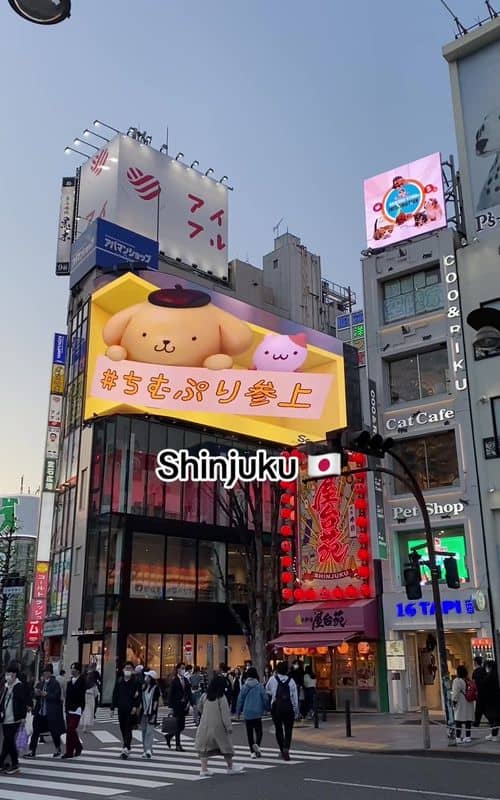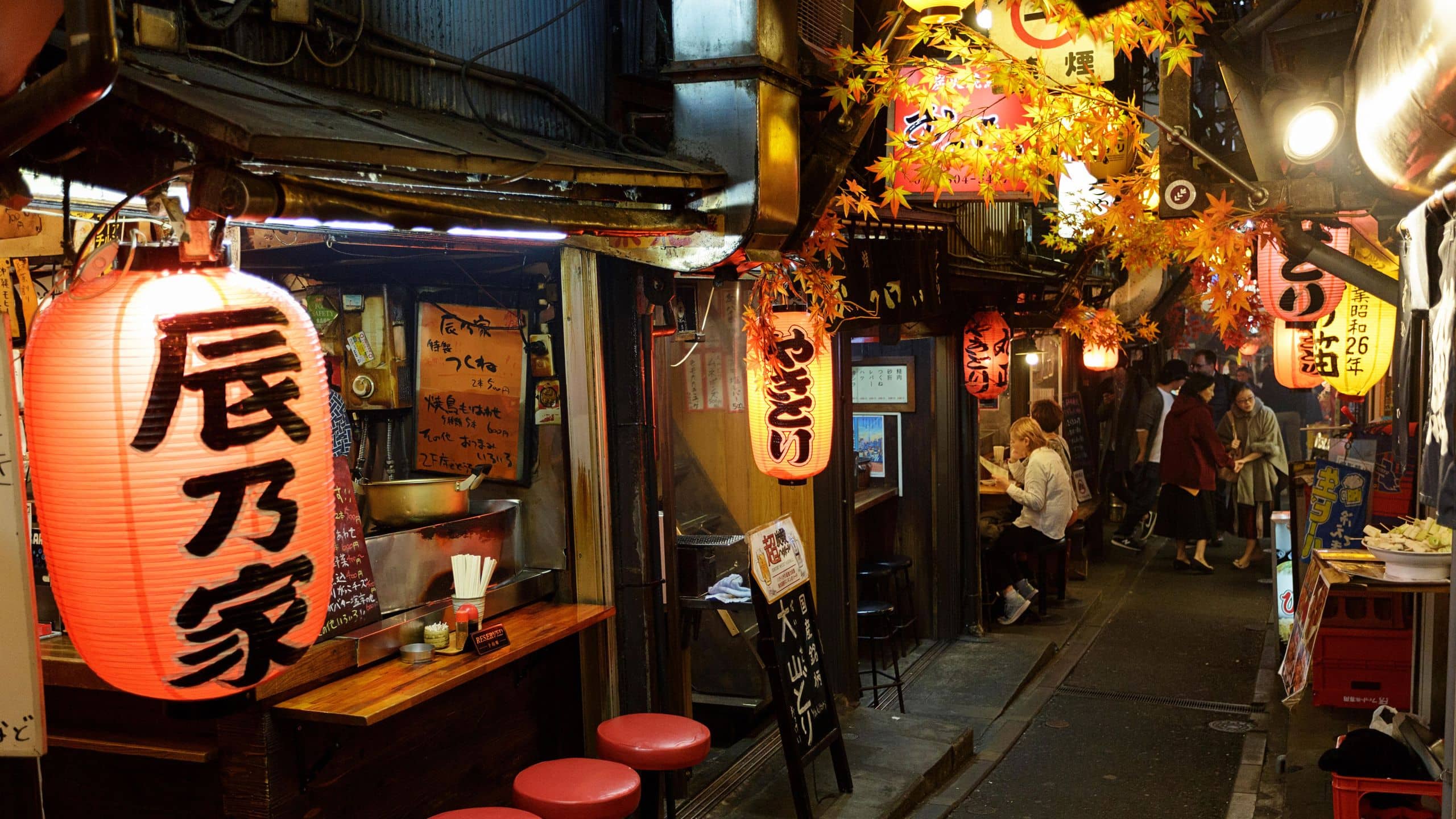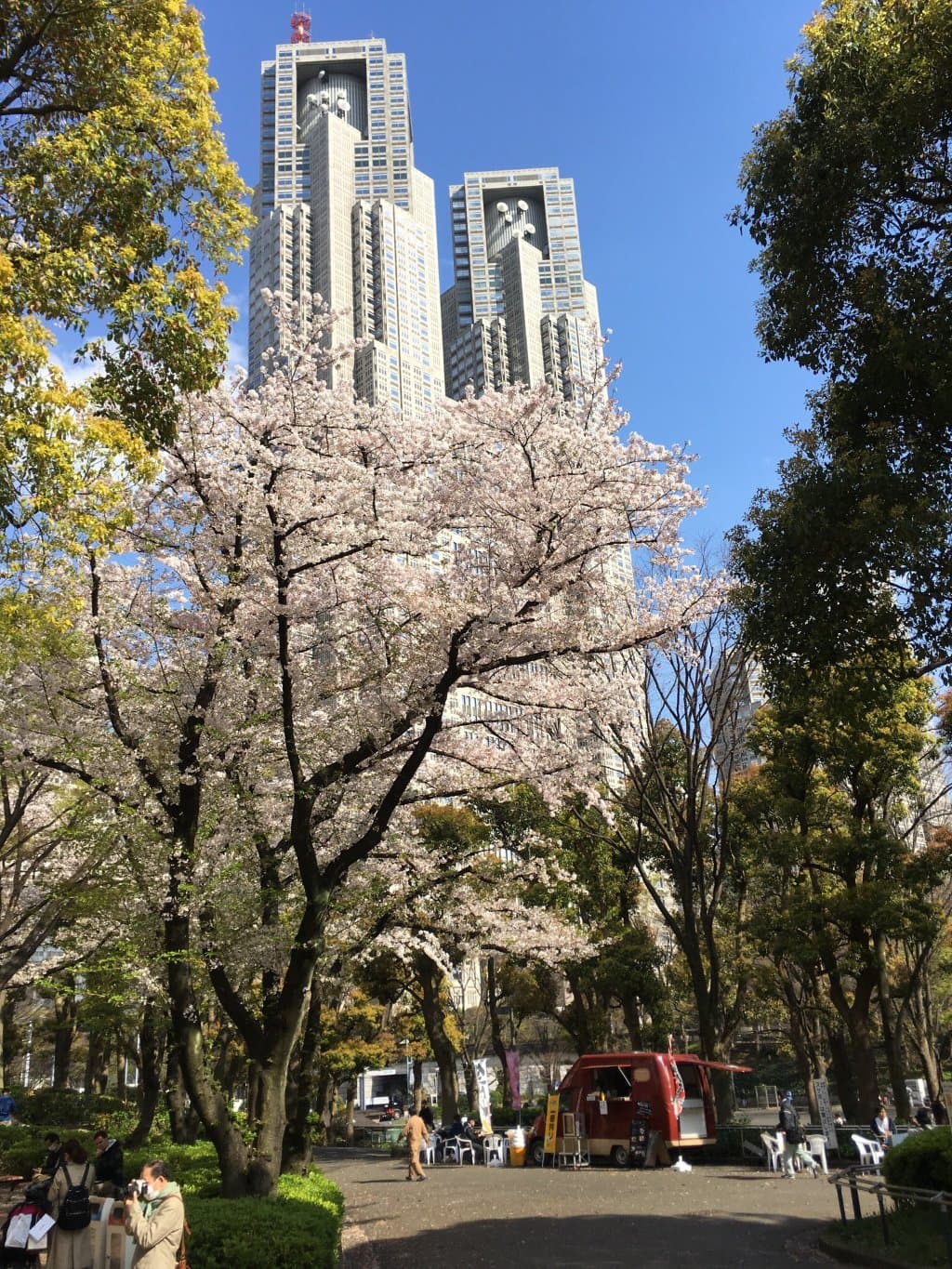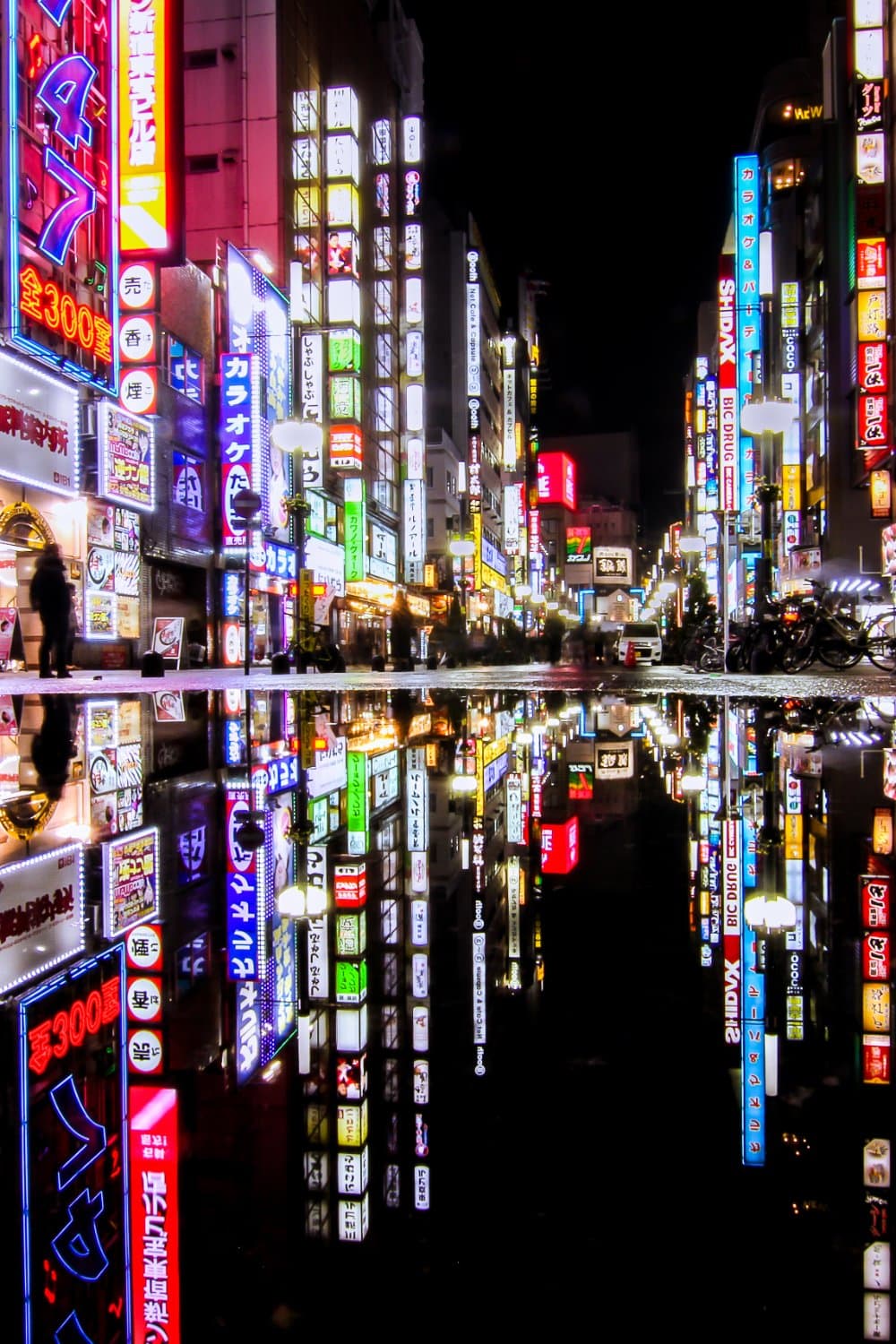Shinjuku Station
The world's busiest station, a sprawling urban labyrinth connecting millions daily with endless shops, dining, and entertainment.

Highlights
Must-see attractions

Social
From TikTok & Reddit
Best Time
Tour groups thin out
Shinjuku Station
Best Time
Tour groups thin out

Highlights
Must-see attractions
The world's busiest station, a sprawling urban labyrinth connecting millions daily with endless shops, dining, and entertainment.
"Navigating this station is an adventure in itself!"
🎯 Download Offline Maps
Google Maps can be tricky inside. Download offline maps or use dedicated Japan transit apps.
⏰ Allow Extra Time
Seriously, give yourself at least 30 extra minutes for transfers or finding exits.
Highlights
Discover the most iconic attractions and experiences
The Grand Concourse
Main concourse areas
Experience the sheer scale and energy of the world's busiest station. A true Tokyo marvel!

Kabukicho's Neon Glow
East side of Shinjuku Station
Dive into Tokyo's vibrant entertainment district, famous for its dazzling neon lights and nightlife.

Omoide Yokocho (Memory Lane)
West side of Shinjuku Station
Wander through atmospheric alleyways filled with tiny, traditional izakayas and yakitori stalls.
Shinjuku Gyoen National Garden
Southeast of Shinjuku Station
Escape the urban bustle in this stunning oasis featuring diverse garden styles.
Plans like a pro.
Thinks like you
Planning Your Visit
Mastering the Maze
Navigating the Crowds
Best Times
Insider Tips
from TikTok, Instagram & Reddit
🎯 Download Offline Maps
Google Maps can be tricky inside. Download offline maps or use dedicated Japan transit apps.
⏰ Allow Extra Time
Seriously, give yourself at least 30 extra minutes for transfers or finding exits.
🎒 Pack Backpack Forward
Be considerate in crowded trains; wear your backpack on your front.
💡 Look for Station Signs
Follow signs for your specific train line or exit number carefully.
Tips
from all over the internet
🎯 Download Offline Maps
Google Maps can be tricky inside. Download offline maps or use dedicated Japan transit apps.
⏰ Allow Extra Time
Seriously, give yourself at least 30 extra minutes for transfers or finding exits.
🎒 Pack Backpack Forward
Be considerate in crowded trains; wear your backpack on your front.
💡 Look for Station Signs
Follow signs for your specific train line or exit number carefully.
☕ Find Hidden Gems
Explore underground for unique cafes like Marukyu Koyamaen matcha.
🛍️ Kiddyland Fun
Don't miss Kiddyland for kawaii souvenirs and gifts!
🍣 Cheap Eats Nearby
Discover Tokyo's cheapest sushi in Kabukicho's side alleys.
What Travellers Say
Reviews Summary
Shinjuku Station is universally acknowledged as a massive, complex, and incredibly busy transit hub. Visitors are often awestruck by its scale and efficiency, but many also find it overwhelming and easy to get lost in. Despite the navigational challenges, its vast array of shops, restaurants, and connectivity make it an essential Tokyo experience.
"We came to this large train station to catch the Romancecar train. The place is huge and filled with people. There are many lines and platforms so reading the signs carefully is needed. Unfortunately, our train was delayed and subsequently cancelled and we had to take a local train. Good thing the ticket office staff explained to us how to change to a local train and we made it to our destination."
S L Chong
"Shinjuku Station is a massive maze in the heart of Tokyo. Arriving here feels like stepping into a real-life version of the game "Exit No.8".
Yes... I got lost. Again!
But despite the confusion, Shinjuku Station has everything - cafes, restaurants, even a 3COINS store. Need to transfer to a high-speed or long-distance bus? No problem. It's all here.
Navigating this station is an adventure in itself!"
Hellseeker
"Shinjuku Station is a marvel of efficiency and scale! As the busiest train station in the world, it’s incredible to see how seamlessly it manages millions of passengers each day. The station is massive, with multiple floors, countless exits, and an impressive range of shops, restaurants, and services, making it feel almost like a city within a city. Navigating can be a bit overwhelming at first, but the signage is helpful, and there are always staff available to point you in the right direction. It’s the perfect hub to access different parts of Tokyo and beyond. Just be prepared for crowds and give yourself a little extra time to get your bearings. Overall, an essential Tokyo experience"
Enoch Olalude
What People Like
What People Dislike
Frequently Asked Questions
🚇 🗺️ Getting There
The Narita Express (N'EX) is a direct and convenient option to Shinjuku Station. Alternatively, you can take a Limousine Bus. Both offer comfortable rides and are well-signed.
Shinjuku Station is a major hub served by numerous lines, including JR (Yamanote, Chuo, Saikyo, Shonan-Shinjuku), Odakyu, Keio, Tokyo Metro (Marunouchi, Shinjuku, Oedo), and Toei Subway lines.
Yes, taxis are readily available outside the station's main exits. However, due to traffic, it might not always be the fastest option for getting around central Tokyo.
While Google Maps is generally excellent in Tokyo, it can be challenging within Shinjuku Station itself due to its complexity. It's best used for approaching the station or finding specific exits.
Shinjuku is incredibly well-connected. The JR Yamanote Line is a popular loop line that stops here, making it easy to reach from areas like Shibuya, Ikebukuro, and Tokyo Station.
🎫 🎫 Tickets & Entry
No, Shinjuku Station is a public transportation hub. You only need a valid train ticket or IC card (like Suica or Pasmo) to board trains or access specific platforms.
Ticket vending machines are available for most JR and private railway lines. For specific tickets like the Narita Express or Shinkansen, JR offices within the station can assist.
There are no entrance fees to simply pass through Shinjuku Station. Fees apply only when you purchase a ticket to ride a train or subway line.
Train lines typically operate from around 5 AM to midnight. However, exact hours can vary by line, so it's best to check the schedule for your specific route.
Yes, IC cards like Suica and Pasmo are widely accepted at Shinjuku Station for all JR and most private railway and subway lines, making travel much smoother.
🎫 🧭 Onsite Experience
This is the million-dollar question! Look for signs indicating exits (e.g., 'East Exit,' 'South Exit,' 'Lumine Exit'). Using a map app on your phone and following the signs is crucial. Don't be afraid to ask station staff for help.
Rush hours, typically from 7:30 AM to 9:30 AM and 5:00 PM to 7:00 PM on weekdays, are extremely busy. Monday evenings are noted as particularly intense.
Absolutely! Shinjuku Station is a city within a city, featuring department stores (like Lumine and Isetan), numerous shops, cafes, and a vast array of restaurants and food courts.
Beyond transportation, you can find entertainment complexes with arcades and gachapon machines, unique shops like Kiddyland, and even hidden matcha cafes.
The station itself is well-lit and generally safe, with staff present. However, the surrounding Kabukicho area is known for its nightlife and can be more intense after dark.
🍽️ 🍽️ Food & Dining
The station itself has countless dining options, from quick bites to sit-down meals. Explore the underground malls, department store basements (depachika), and nearby areas like Omoide Yokocho for traditional izakayas.
Yes! Look for small eateries in side alleys, convenience stores (konbini) for affordable snacks and meals, and even places like '10 Yen Sushi' in Kabukicho for extremely cheap eats.
You can find almost anything! From classic Japanese ramen, sushi, and tempura to international cuisine, themed cafes, and izakaya fare.
Definitely! Hidden gems like Marukyu Koyamaen offer delicious matcha lattes and treats, often found in the underground areas.
Omoide Yokocho, or 'Memory Lane,' is famous for its nostalgic atmosphere and small yakitori and izakaya restaurants, offering a taste of old Tokyo.
📸 📸 Photography
The iconic neon signs of Kabukicho at night are a must-shoot. The bustling station concourses offer dynamic shots of people and movement. Omoide Yokocho provides atmospheric, vintage-style photos.
Yes, photography is generally allowed inside Shinjuku Station for personal use. However, be mindful of other passengers and avoid obstructing walkways.
The Tokyo Metropolitan Government Building offers free panoramic views of the city, including Shinjuku, and is a fantastic spot for photography.
Golden hour (shortly after sunrise or before sunset) can offer beautiful light. For neon lights, nighttime in Kabukicho is unparalleled.
Capturing the sheer scale of the station's architecture, the organized chaos of rush hour, or even the quirky 'Shinjuku kitty' if you're lucky, can make for unique shots.
For Different Travelers
Tailored advice for your travel style
👨👩👧 Families with Kids
💰 Budget Travelers
couples
Deep Dives
In-depth insights and expert knowledge
Conquering Shinjuku Station: A Survival Guide
Beyond its primary function, Shinjuku Station is a destination in itself. It houses extensive shopping complexes like Lumine, offering everything from fashion to souvenirs. Underground, you'll find a plethora of dining options, from quick-service eateries to gourmet food halls. For a unique experience, seek out hidden gems like the Marukyu Koyamaen matcha cafe or the vast arcade and gachapon halls. The station's sheer scale and the constant flow of people create a unique atmosphere, making it an essential part of the Tokyo experience, even if it requires a bit of strategic planning.
When transferring between lines or exiting the station, remember that different railway companies operate within Shinjuku. Pay close attention to the signs indicating which company's platforms you need. For instance, the JR lines are distinct from the Tokyo Metro or Toei Subway lines. If you're arriving from Narita Airport via the Narita Express (N'EX), you'll be on a JR line, and signs will guide you towards other JR services or exits. For those heading to popular nearby attractions like Shinjuku Gyoen National Garden or the bustling Kabukicho district, identifying the correct exit is paramount to minimizing your walking time.
Exploring Shinjuku's Vibrant Nightlife and Dining
For a more nostalgic and intimate dining experience, wander through Omoide Yokocho (Memory Lane) or Golden Gai. Omoide Yokocho is a network of narrow alleyways packed with tiny, atmospheric izakayas and yakitori stalls, offering a taste of post-war Tokyo. Golden Gai is a collection of small bars, each with its unique character, perfect for a quiet drink and conversation. These areas provide a stark contrast to the modern bustle of the station and Kabukicho, offering a glimpse into a different side of Shinjuku.
Food-wise, Shinjuku is a paradise. Beyond the countless restaurants within the station and department stores, you can find some of Tokyo's most affordable eats. '10 Yen Sushi' (Namae no nai Sushiya) in Kabukicho is legendary for its incredibly low prices. For those seeking unique flavors, exploring the basement food halls of department stores (depachika) offers an overwhelming selection of prepared foods, sweets, and delicacies. Don't forget to try some of the local specialties like ramen, yakitori, and of course, delicious matcha treats found in various cafes.
Shopping and Entertainment in Shinjuku
Entertainment options abound, especially in the Kabukicho area. You can find large Namco arcades with a wide range of games, from classic favorites to modern virtual reality experiences. The station also features numerous gachapon (capsule toy) machines, offering a fun and affordable way to collect unique trinkets. For a more relaxed form of entertainment, consider visiting the Tokyo Metropolitan Government Building for its free observation decks, offering stunning panoramic views of the city, especially at sunset or night. This provides a fantastic photo opportunity and a peaceful escape from the station's intensity.





Social
from TikTok, Instagram & Reddit